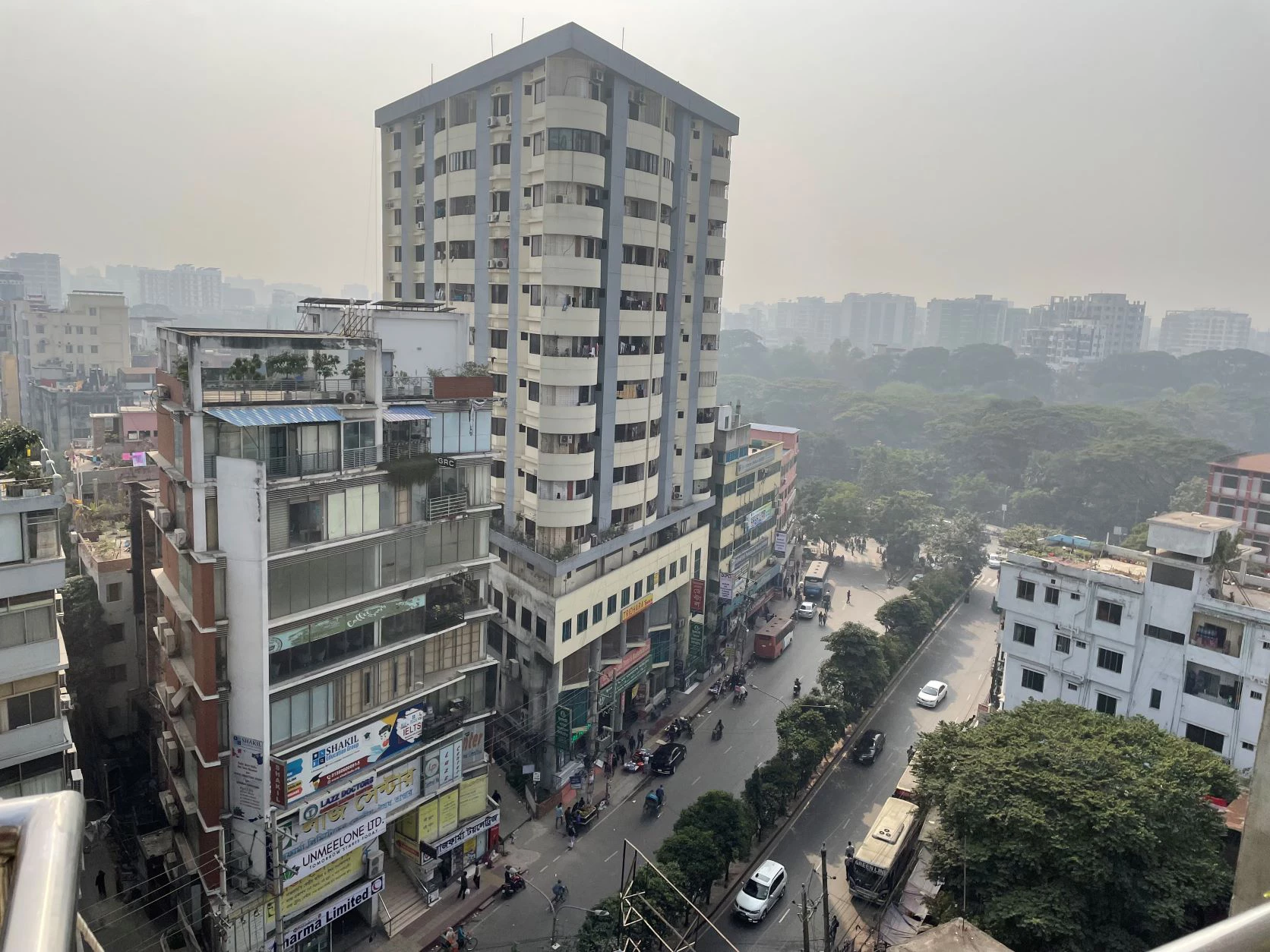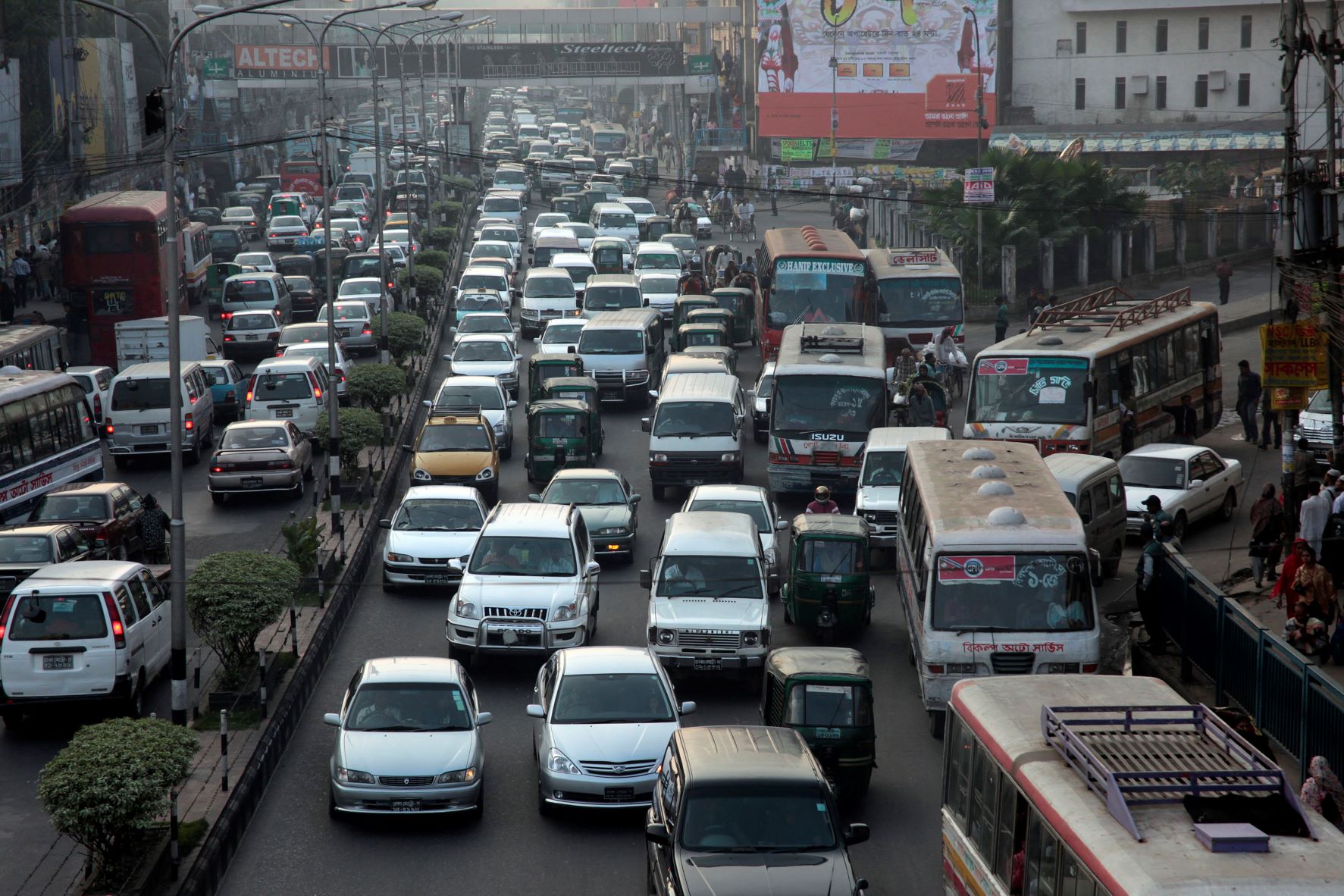 Dhaka is the second most polluted city in the world
Dhaka is the second most polluted city in the world
In Dhaka, commuting to work alongside heavy traffic combined with ongoing construction seems to be the daily norm.
While Bangladesh maintained robust economic growth over the past decades, it also has repeatedly ranked among the top of the most polluted countries in the world between 2018 to 2021. Its capital Dhaka ranked as the second most polluted city globally over the same duration. A World Bank study, Breathing Heavy - New Evidence on Air Pollution and Health in Bangladesh, estimated 78,145 to 88,229 deaths was caused by air pollution in 2019 , which is the second strongest risk factor, causing most deaths and disabilities in the country between 2009 and 2019.
Pollution sources and where to find it
The report shows how air pollution is affecting the physical and mental health of people living in the country. We primarily looked around the region of Dhaka and Sylhet - Dhaka being the most polluted part of the country as a comparator to Sylhet, the least polluted part of the country.
The study found that in Dhaka, there are three major sources and sites of pollution. The places with i) persistent traffic; ii) major construction and traffic; and iii) brick kilns. It also focused on key air pollutants, namely fine particulate matter, and coarse particulate matter (PM2.5 and PM10), and the related health outcomes of 12,250 individuals living in the vicinity of the four study sites.
Key findings of the report
- Location and exposure: The report finds that the highest concentrations of air pollutants (namely the highly harmful PM2.5) are emitted from locations with major construction and traffic, followed by brick kilns.
The average exposure of PM2.5 in locations with major constructions is 150 percent above the World Health Organization (WHO) Air Quality Guideline (AQG) limit (15 μg/m3 over a 24-hour period), equivalent to smoking 1.7 cigarettes per day. This is irrespective of whether the individual is a small child or a non-smoking adult, the inhalation of these pollutants is universal. WHO exposure near the brick kilns is 136 percent above the WHO AQG limit – equivalent to smoking 1.6 cigarettes per day. Even individuals in Sylhet, the least polluted region in the country, experience exposure levels 83 percent above the WHO AQG limit or smoking 1.2 cigarettes a day.
- Elevated health risks: Exposure to air pollutants is significantly associated with elevated risks of physical health conditions such as coughs, breathing difficulties and lower respiratory tract infections. For instance, a 1 percent increase in exposure to PM2.5 above the WHO AQG limit is associated with a 12.8 percent increase in the likelihood of a person experiencing breathing difficulties, 12.5 percent higher probability of having a wet cough, and 8.1 percent higher likelihood of experiencing lower respiratory tract infection.
- Vulnerable demographic: The people who are most vulnerable to the effects of air pollution in Bangladesh are the elderly (65+ years), children (0 to 5 years), and people who already have underlying health conditions such as diabetes, heart and respiratory conditions, allergies, among others. In fact, children (0 to 5 years) living near major construction sites with traffic are more likely to experience coughs, breathing difficulties and lower respiratory tract infections (comparable to pneumonia, and one of the largest causes of death for this age group) than anywhere else in the country.
- Effects on mental health: Findings suggest that a 1 percent increase in the exposure to PM2.5 above the WHO AQG limits is associated with a 20.2 percent higher likelihood of experiencing depression.
Combating measures
Through the health sector, measures to respond to the health crisis can be implemented while a multi-sectoral approach is needed for reducing exposure to air pollution.
Some of these measures are improving public health service delivery platforms to deal with the health effects of air pollution, with a focus on vulnerable groups such as the elderly and children. By raising awareness and building the capacity of medical practitioners through training, service delivery can be enhanced.
In addition, strengthening public health response mechanisms to promote preventive measures can support the government to address emerging health issues. For example, community-level mobile teams can be established to screen for health risks like persistent coughs and breathing difficulties associated with air pollution. Other outreach activities can also be used to create awareness among the public about the adverse effects on health due to air pollution.
Using more granular data, together with the weather data (on temperature, humidity, and precipitation) collected by the Bangladesh Meteorological Department, relevant government agencies will be able to provide a complete picture of the extent of air pollution in Bangladesh. By establishing effective public outreach systems to provide early warning during days expected to have high air pollution levels, more awareness can be raised minimizing exposure to air pollution.
Finally, it is important to conduct more research to further substantiate the effects of air pollution on health, as well as to establish the nexus between climate change and air pollution. Such additional research in this space will help triangulate the findings and assist in better understanding the health impacts of air pollution.
A collective effort from the government through policy reforms and initiatives aimed directly at improving health services, raising awareness, and comprehensive research on air pollution can mitigate this crisis.




Join the Conversation